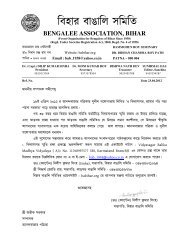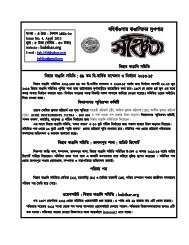Bengali Report - Bengalee Association Bihar
Bengali Report - Bengalee Association Bihar
Bengali Report - Bengalee Association Bihar
You also want an ePaper? Increase the reach of your titles
YUMPU automatically turns print PDFs into web optimized ePapers that Google loves.
The most substantive welfare programme of the state government for helping the<br />
economically disadvantaged population is the Public Distribution System (PDS) for<br />
foodgrains and a few other essential items of consumption. Although it is a<br />
universal programme, the real beneficiaries are those who hold a ration card which<br />
is either red (BPL household), or white (annapurna programme) or yellow (antodaya<br />
programme). The households living above poverty line (APL) are given a blue card.<br />
The distribution of ration cards of various types by the administration is beset with a<br />
number of problems in <strong>Bihar</strong>, and the situation is no different for <strong>Bengali</strong><br />
households. In spite of wide prevalence of poverty, the proportion of <strong>Bengali</strong><br />
households holding a red, yellow or white card is less than 40 percent (Table 11).<br />
Since the poverty level among the <strong>Bengali</strong> population is relatively higher in West<br />
Champaran and East Champaran, one also finds relatively more red/white/yellow<br />
cards in those districts. Yet another problem for the <strong>Bengali</strong> households vis-à-vis<br />
public distribution system is that 30.4 percent of them do not have any ration card. It<br />
is quite possible that some of these excluded households probably did not care to<br />
19


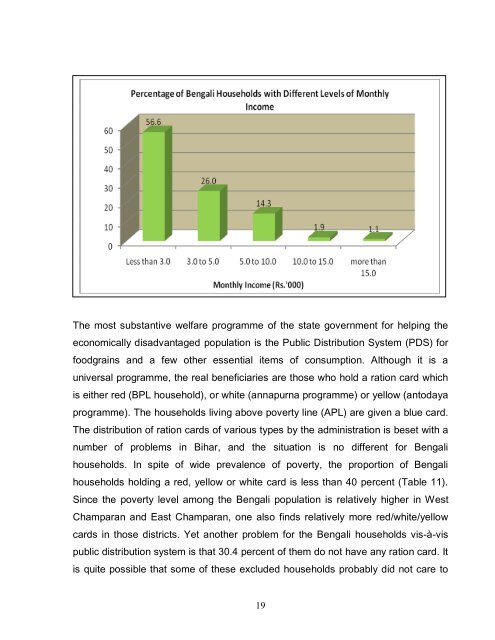

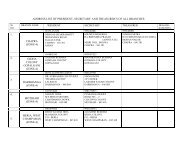
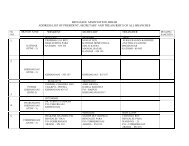
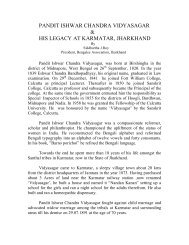
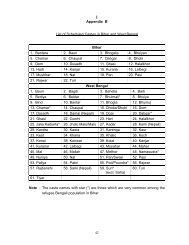
![nandan kanan[1] - Bengalee Association Bihar](https://img.yumpu.com/17028545/1/190x245/nandan-kanan1-bengalee-association-bihar.jpg?quality=85)
